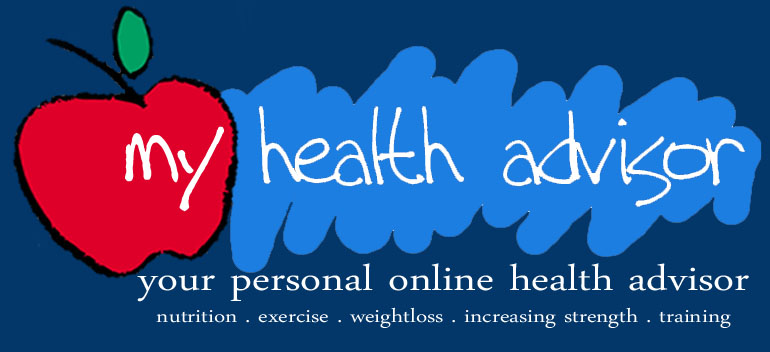So what's the excuse this time? No gym membership? No time? No problem!
There are plenty of workouts that can be done at home. My favorite equipment is just a set of adjustable dumbbells that I bought at Sports Authority similar to these ones. With them I can work out all my major muscle groups (you might want ones with more weight if you are a very muscular person). For cardiovascular workouts I run outside, but you could walk or bike as well.
You can also use calisthenics. These are workouts that use your own body as resistance to strengthen your muscles and increase flexibility. Some examples of these are crunches, push ups, pull ups, lunges, and calf raises.
Bob Harper, trainer on the Biggest Loser, gives a few more examples of calisthenics that you can add to the list:
Can I just say that I LOVE The Biggest Loser.
Thursday, February 12, 2009
What is a Calorie?
 From the way people talk about calories, you would think that they are most horrid, awful, frightening thing out there. "I can't eat that...it has CALORIES!!" Scary, I know. But the truth is that a Calorie isn't a bad thing at all. You don't believe me, do you? Well, Let me explain:
From the way people talk about calories, you would think that they are most horrid, awful, frightening thing out there. "I can't eat that...it has CALORIES!!" Scary, I know. But the truth is that a Calorie isn't a bad thing at all. You don't believe me, do you? Well, Let me explain:What is a Calorie?
Scientifically, a calorie is just a unit of energy. One calorie is the amount of energy it takes to increase one gram of water by 1 degree Celsius. To make this confusing, a calorie (with a lower-case c) is different than a Calorie (with a capital c). One Calorie is equal to one-thousand calories. That means that one Calorie is the amount of energy it takes to increase 1,000 grams (one liter) of water by 1 degree Celsius...but what does that mean for you and your yogurt snack?
Filling up your tank
I'm sure you've heard the analogy that eating food is like filling your car with gas. It gives you energy to go. Food is composed of molecules (carbohydrates, proteins, and fats) and your body will break down these molecules during digestion. When it does, it releases energy. The amount of energy a certain foods will give you is measured with Calories. A person running a marathon is like a car going on a road trip. It needs more energy to accomplish its task. That means a full tank for the car and a calorie rich diet for the runner. A person who sits on the couch needs a lot less energy to perform his/her tasks for the day, sort of like the car that is just driving across the street.
How many calories do I need?
The nutrition label on food bases the Daily Value percentages on a 2,000 Calorie diet. This is just an average. Your actual caloric need is based on muscle mass and activity level. A person with more muscle burns more calories just breathing than a person with less muscle. Obviously, a person who is more active will use more calories as well. Use this calculator to determine how many calories you need.
Where do these calories go?
So what happens to all these Calories we consume? As an average, about 70% of energy you use is put toward basic bodily functions like breathing, heart beating, etc. So if you need 2,000 Calories, 1400 Calories are being burned by you just laying in bed all day. Another 20% of your energy use goes toward digestion. That would be 400 Calories based on a 2,000 Calorie need. That leaves only 10% of Calories that are being used to support our daily activity. That is a mere 200 Calories based on a 2,000 Calorie need. Just one of those yogurts I eat every day goes toward physical activity! The rest are burned without a second thought.
Of course these are just averages. If you are a very active person, a larger percentage of your energy is being used on daily activity. Conversely, if you live a very sedentary lifestyle (sitting on a couch) then your daily activity requires less energy.
Notice that these percentages are based on the amount of energy you USE not the amount of energy you CONSUME. So what happens when you consume more food energy than you are actually going to use? Well, it goes into energy storage. That is a nice way of saying: IT TURNS INTO FAT. That fat serves as emergency food storage for when food is less plentiful and it stays there until you don't consume enough calories to sustain your energy use.
Oops, I ate too many calories and now have energy storage. What do I do?
How do you get rid of that fat then? Well, you already know the answer to that one. DECREASE your Caloric intake and INCREASE your Caloric use. In other words, eat less and exercise more.
What type of foods have calories?
Well, any food that contains protein, fat, or carbohydrates do (practically everything!). One gram of carbohydrates contains 4 Calories. One gram of protein contains 4 Calories. But just one gram of fat contains 9 Calories. Moral of the story: limit your fat consumption.
In Conclusion
So Calories can be your foe or your friend. It depends on whether you need energy to sustain your activities like running or backpacking or if you already have tons of energy stored up (fat) that you would like to use. Everybody needs energy, just be careful only to consume the amount you need.
Labels:
nutrition
Subscribe to:
Posts (Atom)



